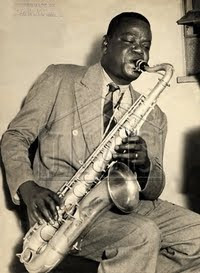Revival of Music by Ireneu de Almeida And The Ophicleide
 |
| Ireneu de Almeida |
Irineu de Almeida (1873-1916), also known as Irineu Batina was an important figure in the early days of choro. He was a member of the famous Banda do Corpo de Bombeiros de R.J. founded and led by the renowned Anacleto de Medeiros. In this band Ireneu de Almeida played the trumpet, tuba, trombone and ophicleide. In Brazil the ophicleide was the first instrument to play the counterpoint bass lines or baixarias; over time the role of this instrument was taken by other low-range instruments such as the euphonium, the tuba, the contrabass and, eventually, the seven-string guitar.
 |
| Ophicleide |
The ophicleide is a keyed brass wind instrument, the bass member of the family whose soprano is the keyed bugle (it is classified as an aerophone, as it has a mouth piece similar to that of a bass trombone). It was patented by the French maker Halary (Jean Hilaire Asté) in 1821. (More info about the ophicleide here)
 |
| Pixinguinha and Ireneu de Almeida |
Ireneu de Almeida was Pixinguinha's music teacher and they performed together in Ireneu's choro ensemble named Choro Carioca. In 1911 the ensemble recorded a number of compositions including Pixinguinha's São João debaixo d’água. Pixinguinha played the flute and Ireneu played the counterpoint melody on the ophicleide.
Irineu’s approach to playing the counter-melody, which has an improvised character, had a profound influence on how Pixinguinha would compose and perform throughout his career. When Pixinguinha later took to playing the tenor saxophone in favour of the flute, his primary musical reference was Irineu’s way of playing the ophicleide. Maurício Carillho has put it this way, quote: "(...) Pixinguinha’s teacher at the beginning of the twentieth century, Irineu de Almeida played the ophicleide. When Pixinguinha played the saxophone he was thinking of the ophicleide, his reference was the ophicleide, right up to his sound of his tenor saxophone sounded more like a ophicleide than that of a tenor saxophone. When one hears the recordings of Irineu de Almeida with Pixinguinha, who was only 13 or 14 years old, playing the flute, you understand Pixinguinha the musician, the sound of Pixinguinha’s saxophone, the contrapuntal language, where all this came from..." (quoted from this source, see pp 23-24, The ophicleide and baixarias, from which the above info is excerpted)
 |
| CD front: Irineu de Almeida e o oficleide - 100 anos depois (Biscoito Fino, 2016) |
Last year the shown CD was released by Biscoito Fino (- more info here and here) featuring music composed and/or recorded by Ireneu de Almeida exposing the ophicleide in an ensemble setting similar to the original recordings made by Ireneu's Choro Carioca ensemble mentioned above. The CD was produced by Maurico Carrilho in collaboration with Mariza and Joana Adnet, and the ensemble playing at the fourteen tracks contained at the CD consists of Everson Moraes (ophicleide), Aquiles Moraes (cornet), Leonardo Miranda (flute), Lucas Oliveira (cavaquinho), Iuri Bittar (violão), Marcus Thadeu (ritmo) and a couple of tracks have extended personnel including Mauricio Carrilho (violão 7 cordas), Beatriz Stutz (clarinet) and Thiao Osória (tuba).
 |
| Everson Moraes ensemble performing - Everson is playing the ophicleide |
The repertoire of the disc has updated arrangements of music by Ireneu de Almeida and features examples of tango brasileiro, polca, choro, maxixe, a.o., very enjoable to listen to. Everson's ophicleide is featured in all fourteen tracks and is skillfully mastered and showing off the instrument's contrapuntal role in interplay with the cornet and flute which have the melody lead. Below I'll insert some examples from the release live performance of the disc to give you an impression of the featured music. - Here is first Everson Moraes and his ensemble performing São João Debaixo dÁgua (tango brasileiro)
From the same live performance, here is the ensemble's version of Ireneu de Almeida's choro titled Pisca-Pisca
Finally, here is Everson Moraes' ensemble performing the choro Qualquer Cousa
I highly recommend the disc by the Everson Moraes ensemble, the music is enjoyable throughout and the contributions by all involved are magnificent recreating the music repertorire by Ireneu de Almeida, an important figure in the evolution of the choro. The CD is available for purchase here
---
Jo
choromusic.blogspot@gmail.com


